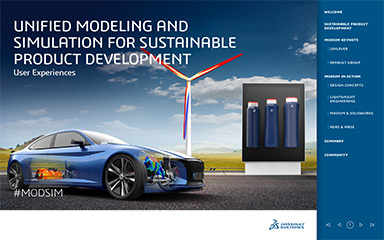Ansys, EMA Launch Product to Improve Electronic Components Design
Ansys EMA3D Charge empowers engineers to predict effects of electrical charging and discharging phenomena, Ansys reports.

EMA3D Charge simulates the surface charging of materials in various low- and high- energy, time-varying, charging environments such as space plasmas, precipitation statics, and triboelectric effect. Image courtesy of Ansys and EMA 3D.
Latest News
October 25, 2021
Together with EMA, Ansys added EMA3D Charge to its simulation solution portfolio, addressing design and safety needs for applications ranging from space exploration to everyday commutes. The new solution enhances predictive accuracy for engineers analyzing charging and discharging events that can lead to catastrophic product failures early in the design cycle.
Aerospace, electronics and automotive industries must meet rigorous electrical performance requirements to mitigate safety risks related to charging and discharging events. Engineers need to be confident a spacecraft will survive exposure to space plasma. High-voltage systems must operate safely without risk of fire. Autonomous vehicles must maintain safety critical functions when faced with an unexpected electrical event. Without fully understanding and addressing these risks, companies may face late-phase redesigns.
High-fidelity predictions from EMA3D Charge provide engineers with a deeper understanding of electrical charging and discharging phenomena. These insights can impact product design, helping engineers determine how electrical components may be harmed—and to what extent—by charging and discharging events. Mitigating risks early in the design phase reduces the chances of late-stage redesigns and costly product failures.
“EMA3D Charge has an impressive array of capabilities,” report EMC engineers at NASA Johnson Space Center. “For example, its ability to easily manipulate and mesh mechanical computer-aided design (CAD) models greatly simplifies the process of going from a structural model of the spacecraft to analytical results. We have also seen great value in its ability to perform charging analysis on spacecraft that are being charged by direct contact with lunar dusts whilst simultaneously being charged from exposure to space plasmas on or near the lunar surface.”
While the technology within EMA3D Charge has been applied in the electronics and aerospace industry before, the solution focuses entirely on charging and discharging prediction. Leveraging Ansys SpaceClaim to create an intuitive user interface and workflow, EMA3D Charge combines CAD import, design and simplification, simulation setup and meshing, and result generalization and visualization into one solver technology.
“EMA3D Charge fills a need in a marketplace in which no other simulation product exists,” says Shane Emswiler, senior vice president of products at Ansys. “Engineers simulating charging and discharging events once had to navigate multiple codes and challenging workflows that fell short of a full solution. EMA3D Charge is a full solution—one that provides high-fidelity analysis and an end-to-end workflow designed for efficiency.”
Discover Ansys EMA3D Charge here.
Sources: Press materials received from the company and additional information gleaned from the company’s website.
More Ansys Coverage
Subscribe to our FREE magazine, FREE email newsletters or both!
Latest News
About the Author
DE’s editors contribute news and new product announcements to Digital Engineering.
Press releases may be sent to them via DE-Editors@digitaleng.news.
Related Topics






